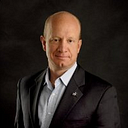Are There Proven Leadership Methods You Can Use Throughout Your Career?
The short answer is yes, but it’s best to reframe ‘methods’ as ‘patterns’ or ‘routines’ that prompt desired results.
I received a Quora question recently asking what are some proven leadership methods I’ve observed during my career. There are! But as I answered the question, I found it helped to reframe it not as what are these leadership methods, but what are some desirable leadership routines or patterns that prompt the kind of results we want.
Method, and maybe I’m being pedantic, speaks to being a little bit artificial, contrived, even manipulative or devious or non-genuine in your leadership approach. To me the idea of routines or patterns is much more effective, and aligned, than leadership methods, which sounds like some sort of a laboratory experiment.
I’m going to give you five ideas, and expand on some and leave others largely undefined. Hopefully, the words themselves will provide the right, or the correct, imagery.
Number one is rhythm. Leadership is about creating a rhythm for individuals, for the group, and the individuals within the group. Think of it as an orchestra. You’ve got the rhythm, the tempo, the melody, etc. all coming together from various instruments to create one piece of music. For me, it’s all about rhythm and everybody being in sync with that rhythm, that beat being consistent.
Number two is consistency. I’ve lectured enough on this in past articles. Leadership is about being constant and consistent. Enough said.
Number three is a clear vision, clearly and consistently communicated. When people know where they’re going, and incidentally as a 180 from that, know precisely where they stand, moving from A to an unchanging B becomes a largely formulaic exercise. A clear vision clearly and constantly communicated is central. That’s why it’s my number three of five.
Four is what I call the R&R cycle, return and report. Instructions are given, suggestions are made, counsel is provided, the direction is set, and then a rhythm (there’s that word again) of return and report exercises is set in place.
For example, “Hey Susie, I’d love you to do this and this. Here are the key tasks that I want you to engage in. You’re going to be successful when you achieve these particular metrics. You’re going to be measured by the personification of those metrics compared to certain desired outcomes, and let’s touch base once a week. Or, I’d love to get an update from you once per X.”
Then in those conversations you receive the report of their assignment, of this stewardship, you counsel, you advise, you partner with them to figure out best directions. You leave the ownership of the assignment you gave them in their hands, but you make yourself available as a resource on a consistent basis/rhythm for them.
That leads me to point number 5, one of my favorite questions: Once someone has received an assignment — note my language there; it’s not about being “given” an assignment. I may give it but they may not receive it. I may say it, but they may not hear it — my question then becomes:
“Hey, Susie. What are your goals, and how can I help?”
In that way, I’m reinforcing ownership. I’m causing them to think through, and you can change the word goals to objectives, or desired outcomes, or whatever, but what are your abc/xyz’s, and how may I help?
I’m demonstrating that I’m happy to, prepared to, hopefully qualified to help. I’m inviting them to invite me to assist when necessary. So, when, and if, that becomes necessary, or fruitful, or advisable, they’re happy to do so. That demonstrates the degree of partnership that leadership and followership really is.
So, there you go. Five routines, rhythms or methodologies that can be included in your leadership rhythm and model as you lead other people and encourage them to follow you more effectively.
